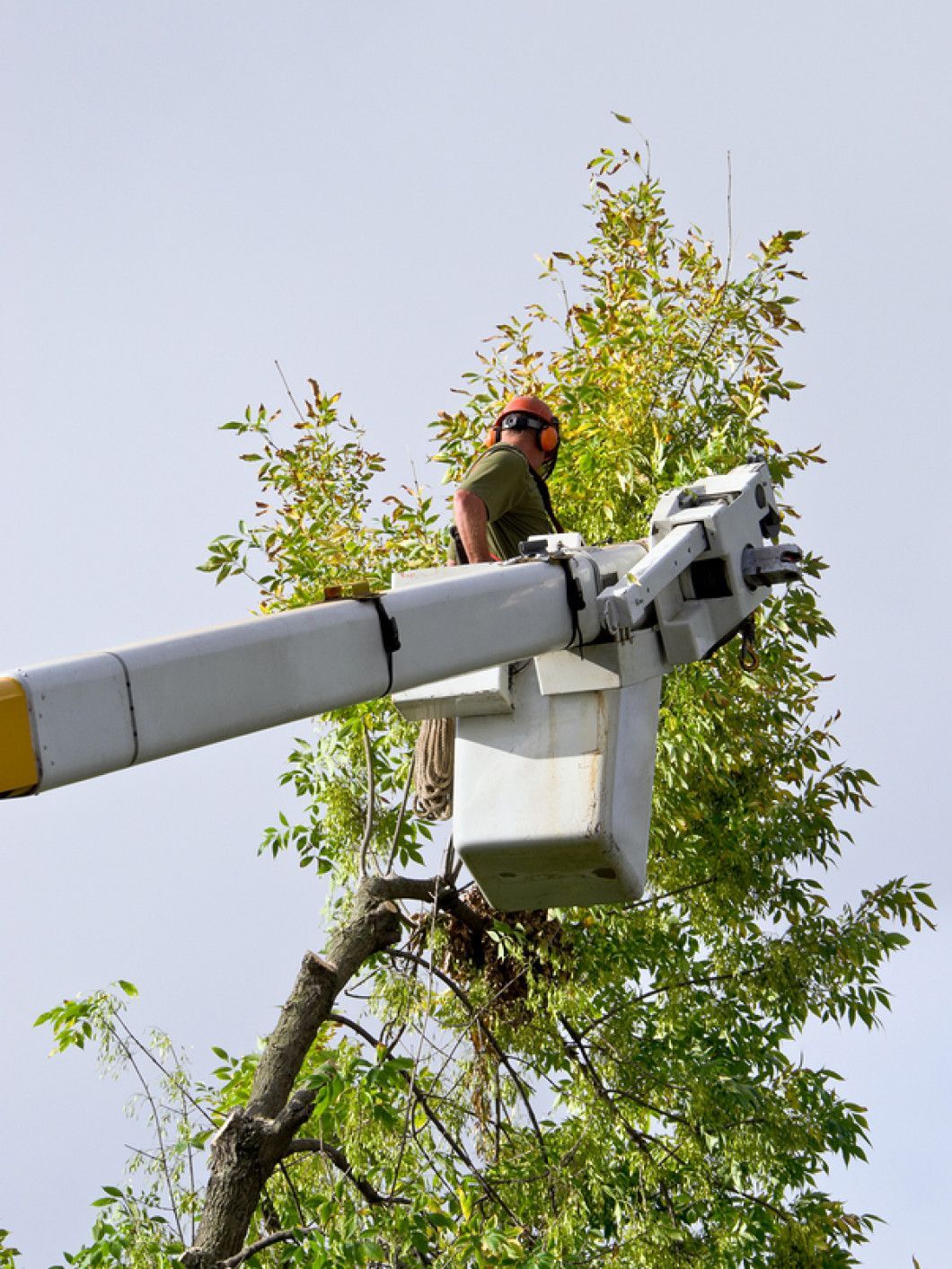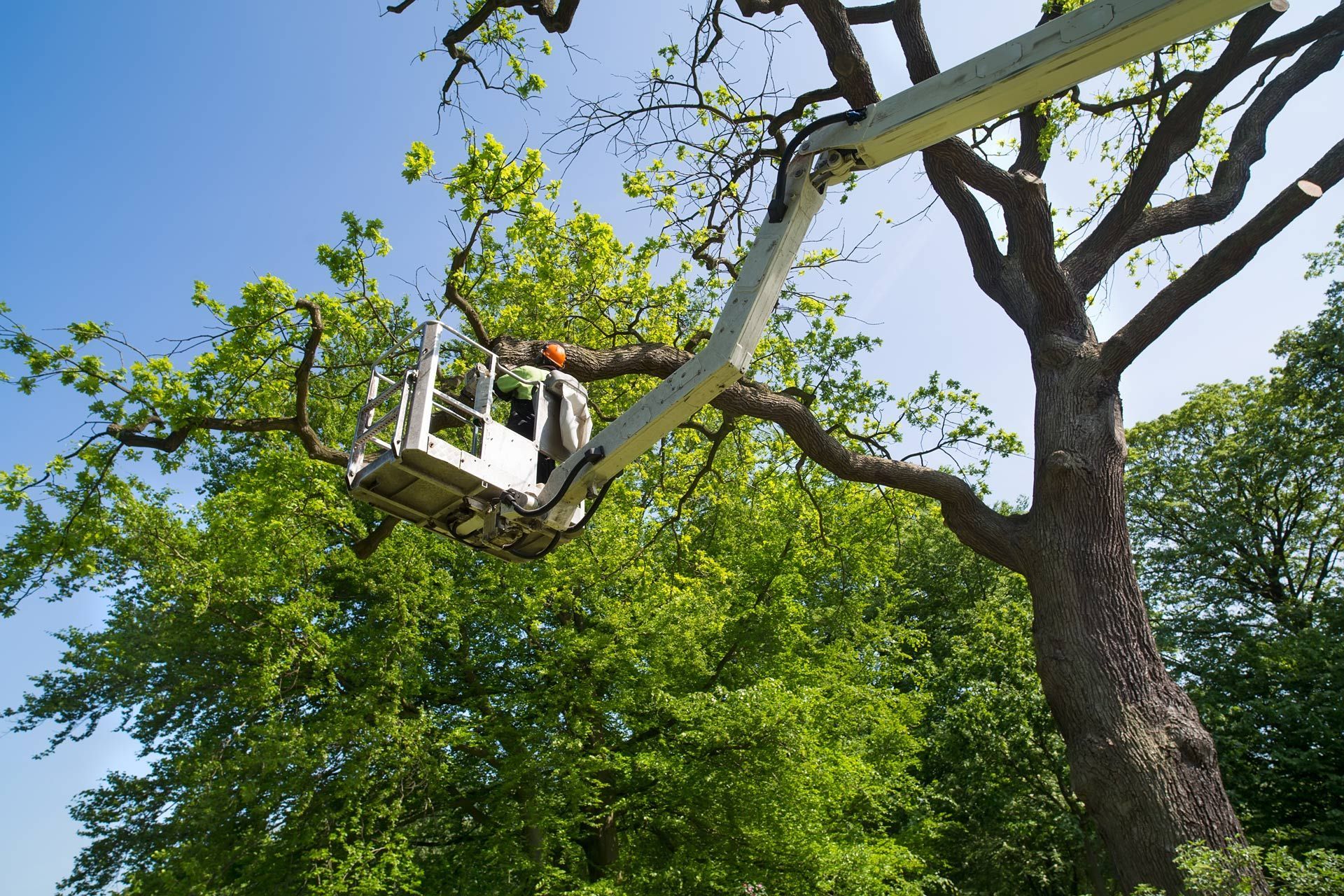Call Us: 440-251-9436
Call Us: 440-251-9436
How to Negotiate Tree Removal Costs and Save Money on Services

Negotiate Tree Removal Costs: Tips to Get the Best Deal and Save Money on Services
If you need tree removal, knowing how to negotiate costs can make a huge difference. Getting the best deal doesn’t mean settling for less quality; it’s about being smart with your approach. With the right strategies, you can lower your expenses while still hiring a skilled professional to handle the job safely.
New Paragraph
What Should You Know About Tree Removal Services?
Before negotiating, it's important to understand what goes into tree removal services. Tree removal isn’t just cutting down a tree. It often involves careful planning, specialized equipment, and trained professionals who know how to handle the job safely.
Tree removal can vary depending on the tree's size, location, and condition. Some trees may require climbing or extra care if they’re close to buildings or power lines. Knowing the details of the removal process will help you have a more informed conversation with service providers, making it easier to negotiate a fair price.
Understanding the Tree Removal Process
The tree removal process involves more than just cutting down the tree. It typically begins with an assessment of the tree’s health, size, and location. The tree service will then decide the best approach to safely remove it, especially if it’s near structures or power lines.
The actual removal may involve using cranes, climbing gear, or bucket trucks, depending on the complexity of the job. After the tree is down, the service usually hauls away the debris and may offer stump grinding as an additional service. Knowing the steps involved will help you understand why certain jobs cost more than others and make negotiating easier.
What Are the Different Removal Methods?
Tree removal can be done using several methods, depending on the situation. Some of the common methods include:
1. Felling
This is the simplest and least expensive option. The tree is cut at the base, allowing it to fall in a controlled direction. However, it requires plenty of open space to ensure there’s no damage to nearby property or landscaping.
2. Climbing and cutting
For trees near buildings or other obstacles, professionals climb the tree and remove it in sections. Each section is carefully lowered using ropes to prevent accidents or damage.
3. Crane-assisted removal
In tight spaces or for extremely large trees, cranes are used to lift sections of the tree and bring them down safely. This method is more complex and costly but is necessary for certain situations.
Knowing these methods helps you understand the complexity of the job and can be useful when negotiating with your tree removal service.
Choosing a Reputable Tree Service Provider
Picking the right tree service provider is key to ensuring a smooth and safe removal. Here are a few things to keep in mind:
1. Check Credentials
Make sure the company is licensed, insured, and certified by relevant organizations like the International Society of Arboriculture (ISA). This guarantees they have the right training and follow safety standards.
2. Read Reviews
Look for reviews online or ask for recommendations from friends and neighbors. Positive feedback from past clients is a good indicator of reliable service.
3. Ask for References
A reputable company will provide references from previous customers. This allows you to ask about their experiences and satisfaction with the service.
4. Get a Written Estimate
Before agreeing to anything, ask for a written estimate that outlines all costs. This prevents any surprise fees and makes it easier to compare prices when negotiating.
Choosing a trustworthy provider ensures you get a fair deal and quality service.
How Can You Save on Tree Removal Costs?
Tree removal can be expensive, but there are several ways you can cut down the cost without compromising on quality. A little planning and research can go a long way in saving you money.
How to Get Multiple Quotes?
Getting multiple quotes is one of the easiest ways to ensure you’re not overpaying for tree removal services. Here’s how to go about it:
1. Research Local Companies
Start by researching tree removal companies in your area. Check their websites for contact information or request quotes directly through online forms.
2. Ask for a Detailed Breakdown
When reaching out to different companies, ask for a detailed breakdown of their costs. This should include labor, equipment, debris removal, and any additional services like stump grinding. Knowing exactly what’s included will help you compare prices accurately.
3. Don’t Rely on Estimates Alone
While estimates give you a general idea of the cost, try to get a firm price. Some companies might add hidden fees later, so having a written and itemized quote can save you from unexpected charges.
Comparing multiple quotes not only helps you find the best deal but also gives you leverage during negotiations.
Is DIY an Option for Tree Removal?
For small trees or simple pruning, DIY tree removal might seem like a way to save money. However, removing large trees is dangerous and requires specialized equipment and knowledge.
1. Safety Risks
Tree removal can involve chainsaws, heights, and heavy limbs. Without proper training, you risk injury or even property damage. It's important to know your limits when considering DIY tree removal.
2. Cost of Equipment
Even if you decide to tackle the job yourself, you’ll need to rent or buy equipment like chainsaws, ladders, or protective gear. These costs can quickly add up, and the job may still require professional help.
3. Know When to Call a Pro
For trees near power lines, buildings, or other obstacles, it’s best to leave it to the professionals. They have the tools and expertise to handle the job safely, which can save you money in the long run by avoiding costly accidents.
While DIY can be tempting, it’s not always the safest or cheapest option for larger tree removal jobs.
When is the Cheapest Time of Year for Tree Removal?
Timing can make a big difference when it comes to tree removal costs. The best time to save money on tree removal is during the off-peak season.
1. Winter and Late Fall
Winter and late fall are typically the cheapest times of year for tree removal. During these seasons, tree removal services experience lower demand, which means they may offer discounts or be more flexible with pricing. The trees are also dormant, making them easier and quicker to remove.
2. Avoid Storm Seasons
Prices can spike during storm seasons when demand for tree removal skyrockets due to emergency situations. If possible, plan your tree removal ahead of these times to avoid inflated costs.
3. Off-Peak Flexibility
If your tree removal is not urgent, ask companies if they offer off-peak pricing. By being flexible with your scheduling, you can often secure a better deal.
Timing your tree removal strategically can lead to significant savings.
Are There Ways to Remove Multiple Trees and Save?
If you need to remove more than one tree, there are strategies that can help you save money. Removing multiple trees at once can often lead to discounts, especially if the trees are in the same area.
How to Partner Up with Neighbors?
Partnering with your neighbors for tree removal can be a smart way to save money. If multiple homes on your block need tree work, pooling your requests can give you more negotiating power.
1. Coordinate with Your Neighbors
Start by talking to your neighbors to see if anyone else needs tree removal or trimming. If several people are interested, approach the tree removal company as a group. This saves the company time and travel costs, which can translate to lower prices for everyone.
2. Present a Joint Proposal
When you contact the tree service, mention that multiple homes are involved. Tree removal companies may offer bulk pricing for multiple jobs in the same location, especially if they don’t need to move their equipment far.
3. Share Quotes with Neighbors
As you gather quotes from different companies, share them with your neighbors. This helps everyone stay informed and ensures you’re all getting the best deal possible.
Working together with your neighbors can lead to significant savings on tree removal services.
Can You Get a Discount for Bulk Removal?
Yes, many tree removal companies offer discounts for bulk removal, especially if you're having multiple trees removed at the same time. Here's how you can maximize savings:
1. Remove Several Trees at Once
If you have several trees that need removal, it's often cheaper to do them all in one go. Tree companies save time and effort when they don’t have to come back for separate jobs, and those savings are usually passed on to you.
2. Ask for Bulk Pricing
When getting quotes, make sure to ask specifically about bulk removal pricing. Some companies may not automatically offer discounts, so it’s important to bring it up during negotiations.
3. Combine Services
If you also need additional services like stump grinding or trimming, mention these when discussing bulk removal. Companies may be willing to reduce the overall cost when bundling multiple services together.
Bulk removal is a great way to save money, especially if you need to clear out several trees at once.
What Are the Average Costs Involved?
The cost of tree removal can vary widely depending on several factors. Understanding the average prices can help you budget and negotiate more effectively.
Factors that Affect the Cost of Tree Removal
Several key factors influence the cost of tree removal. Understanding these can help you gauge whether a quote is reasonable and give you leverage when negotiating.
1. Tree Size
The larger the tree, the more expensive it is to remove. Taller trees require more equipment and time to take down, especially if they are over 60 feet.
2. Location of the Tree
If the tree is close to buildings, power lines, or other structures, the job becomes riskier. Extra precautions like cranes or additional crew members may be necessary, which can raise the price.
3. Tree Condition
Trees that are dead, diseased, or damaged can be harder to remove safely. Unstable trees pose a higher risk to workers and may require extra care, leading to higher costs.
4. Accessibility
Trees that are difficult to reach, such as those in fenced areas or on steep slopes, may result in additional fees for the equipment and labor needed to access the site.
5. Additional Services
If you require stump grinding, debris removal, or wood chipping, these add-on services will increase the overall cost. Be sure to ask if these are included in your quote or if they come at an additional charge.
Each of these factors can significantly impact the final price, so it’s important to understand how they affect your specific tree removal project.
What is the Average Cost of Tree Removal?
The cost of tree removal can vary depending on the tree's size, location, and complexity. On average, homeowners can expect to pay anywhere from $200 to $2,000 per tree. Here's a more detailed breakdown:
1. Small Trees (Up to 30 Feet)
For smaller trees, such as ornamental trees or young fruit trees, the cost typically ranges from $200 to $500. These trees are easier and faster to remove, requiring less equipment and manpower.
2. Medium Trees (30 to 60 Feet)
Medium-sized trees, like oak or maple, can cost between $500 to $1,000. The size and location of the tree may increase this cost, especially if special equipment is needed.
3. Large Trees (60 to 80 Feet)
Larger trees, like mature oaks or pines, range from $1,000 to $2,000. The complexity of removing large trees often requires multiple workers, cranes, and extensive safety precautions, leading to higher costs.
Understanding these price ranges helps you plan your budget and know what to expect when getting quotes from tree removal services.
How Does Tree Size Influence Price?
Tree size is one of the biggest factors that affect the cost of removal. The taller and wider the tree, the more time, effort, and equipment are required to take it down safely.
1. Height
The height of the tree directly influences the cost. Shorter trees are quicker and easier to remove, while taller trees (over 60 feet) often require specialized equipment like cranes. The additional height increases labor time and the need for extra safety precautions, which raises the price.
2. Trunk Diameter
A wider trunk means more work when cutting the tree into manageable pieces. Trees with thick trunks can take longer to cut down and may require heavy-duty chainsaws, leading to higher labor and equipment costs.
3. Weight
Larger trees are heavier and require more effort to remove safely. The weight of the tree affects not only the cutting process but also the removal of the wood and debris. Heavier trees are more labor-intensive, which pushes up the total cost.
4. Removal Complexity
For very large trees, removal may need to happen in sections, especially if the tree is located near buildings or power lines. Removing the tree piece by piece is more time-consuming and, as a result, more expensive.
Tree size significantly impacts the overall price, so it's important to consider how the height and width of your tree will affect the final cost.
Conclusion
Negotiating tree removal costs doesn't have to be a hassle. By understanding the factors that influence pricing and following smart strategies, you can save money while ensuring you get high-quality service. From gathering multiple quotes to taking advantage of off-peak seasons, there are plenty of ways to make tree removal more affordable. Just remember, choosing a reputable service provider is key to getting the job done safely and efficiently.
If you're looking for reliable, professional tree care services, Troyer's Tree Service is your best bet. Based in West Farmington, we proudly serve areas like Solon, Warren, and Chagrin Falls, offering top-notch tree removal, tree trimming, stump grinding, and lot clearing services.
At Troyer's Tree Service, we bring together years of experience and a commitment to excellence. Whether it's the safe removal of a hazardous tree or preparing a lot for future development, we handle every job with precision and care. Contact us today to schedule a consultation, and let us help you maintain the beauty and safety of your property!
FAQs
How do I find the best tree removal companies for my needs?
To find the best tree removal companies, start by researching local services, reading reviews, and comparing prices. Ensure that the company is reputable, has certified arborists, and offers the specific services you need, such as tree trimming or stump removal.
What factors affect the cost to remove a tree?
The cost of removing a tree can be influenced by the size and type of the tree, its location, the complexity of the job, and any additional services like stump grinding or tree trimming. Larger or hazardous trees may cost more to remove due to increased risk and labor.
How can I negotiate a lower price for tree removal services?
Know how to negotiate by obtaining multiple quotes from different tree removal companies and using them to compare prices. You may be able to negotiate a better price by asking for discounts, especially if you are removing multiple trees or combining services like stump removal.
Is it possible to get free tree removal services?
Some companies offer free tree removal under specific circumstances, such as if the tree is hazardous or if they can use the wood for other projects. It's important to ask and negotiate with the service provider to see if they offer free removal options.
What should I consider when hiring a tree removal company?
When hiring a tree removal company, ensure that they are insured and licensed, have good reviews, and provide a detailed estimate. It's crucial to ensure that the company employs certified arborists and that the job is done safely and professionally.
Why is it important to know how to negotiate tree removal costs?
Knowing how to negotiate tree removal costs can help you save money and ensure you receive fair pricing for the services needed. By negotiating, you can also clarify the scope of the job and any additional services you might require, such as tree and stump removal or trimming.
What are some tips to negotiate tree removal costs effectively?
Some tips to negotiate tree removal costs include getting multiple quotes, asking about package deals for multiple services, scheduling during the off-season when demand is lower, and inquiring about any available discounts or promotions.
How much will it cost to remove a large tree?
The cost of removing a large tree can vary significantly based on factors like its height, diameter, location, and condition. On average, removing a large tree can cost anywhere from several hundred to several thousand dollars. It's best to get an estimate from a local tree removal company.
Should I remove the stump after the tree is removed?
Removing the stump after the tree is removed is recommended to prevent regrowth, eliminate a tripping hazard, and improve the appearance of your yard. Stump grinding is a common method used for tree stump removal and can be negotiated as part of the overall tree removal service.

Our Services
Tips & Articles
Contact Information
Phone:
440-251-9436
Address:
5895 State Route 534, West Farmington, OH 44491, United States of America
Area We Serve
All Rights Reserved | Troyers Tree Service








